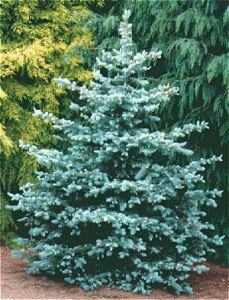 The local USDA garden zone is 6b with a definite influence from zone 7. This defines our area as mild, but with a definite winter and possible subzero temperatures.
The local USDA garden zone is 6b with a definite influence from zone 7. This defines our area as mild, but with a definite winter and possible subzero temperatures.
Low winter temperatures provide the chilling necessary to grow all the deciduous fruits and perennials that thrive in the coldest climates. The list includes apples, peaches, cherries, grapes, and berries. This climate also is conducive to blooming deciduous shrubs such as lilac, forsythia, hardy camellia, rose of Sharon, butterfly bush, and Russian sage.
Our cool season is so mild that we are able to garden and design landscapes 12 months of the year. Broccoli, spinach, lettuces, cabbages, and Brussels sprouts have arrived at local garden centers and can be planted soon for harvests at Thanksgiving and Christmas. Few places in the country allow this type of two season harvests.
A mild cool season also is a boon for gardeners who grow for color. A splash of flowers blooming through the snow is an oasis of cheer during our winters. Our best winter-blooming flowers include pansies, snapdragons, violas, dusty miller, Johnny-jump-ups, and ornamental kale. All are available at garden centers now and should be planted in late Summer so they are fully rooted before our cold weather makes its debut. I fully expect my garden to provide glorious color for each of my holiday parties and on through the rest of the winter.
Never, but never, underestimate the Arizona sun, wind, and dry air. They are major influences in determining which plants will do well in our landscapes, and which ones won’t. Informed selectivity is essential when choosing plants for an Arizona mountain landscape. Our area does best with plants that have thick, leathery leaves; they allow plants to retain extra moisture and to be less prone to tearing during the area’s fierce windstorms. This is when it pays to talk to a gardening expert with experience dealing with local landscapes; it can save you a whole lot of time, energy, and expense in creating your landscape.
Mountain soils change from home to home, even on the same street. In many landscapes the soil in the front yard is different from that in the back yard! You need to learn how plants react in each new garden location. Local soils typically are either sandy or heavy clay with very little organic material. Therefore, soil preparation for planting is of extreme importance. It demands the addition of organic mulch to your soil to either hold in the moisture for granite soils, or to keep clay soils from compacting. Our soil is alkaline, so don’t add either lime or wood ashes, they increase its already high pH. Instead local gardens benefit from additives that lower the soil’s pH.
Because we’re surrounded by National Forest lands, mammals can be an issue for local gardeners. Javalinas, deer, antelope, rabbits, squirrels, and gophers all have the potential to devour portions of a carefully planned landscape. Garden here for more than a season and you quickly will find locals that either have given up because of the critters or have found ways to garden “along ‘side ‘em”.
~~ ~~ ~~ ~~ ~~ ~~ ~~
This week’s monsoon rains presented the perfect time to plant new trees and shrubs. Not only is the extra moisture a balm for new plantings, but also planting holes are easier to dig after a wet cycle. I took advantage of the weather to plant four new aspens and an additional lilac in my own landscape.
The rains prompted this week’s ‘Plant of the Week’ idea because it is such a good time to plant large specimens. The Fat Albert Silver Spruce is a rich silver blue slow-growing 10-foot tall conifer. Its dense branches, with a pyramidal base spread of 12 -15 feet wide, form a wonderful living Christmas tree that delivers winter-long festivity to any landscape. Excellent in front yards with limited landscape possibilities, Fat Albert also is a good choice to fill up bare corners or provide mass in gardens with other low maintenance plants. Dense & durable, they work well as windbreaks, shelter belts, privacy screens, and/or sound barriers. For the money, these are perfect specimen trees.
Throughout the week Ken Lain is at Watters Garden Center, 1815 W. Iron Springs Rd, Prescott, and can be contacted through his web site at www.wattersonline.com. See Ken’s personal gardens via Facebook at www.facebook.com/wattersgardencenter

